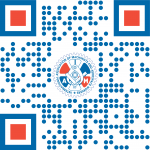Essential Information About the EI Program
This document is a guide to help members on lay-off access Employment Insurance benefits, and other emergency benefits provided by the Canada Revenue Agency (DOWNLOAD THE PDF)
Table of Contents
Applying for EI: What You Need to Know………..2
Minimum Benefit Rate……………………………….….2
Eligibility for EI…………………………………………….2
Things to Keep In Mind…………………………………3
Before You Apply………………………………….……….3
Late ROEs……………………………………………………4
Is the EI benefit taxable?…………………………………4
Your Obligations While Receiving EI Benefits ….5
Upgrading Your Skills…………………………………….5
Financial Assistance for Training……………………5
Canada Recovery Benefit…………………………………5
Canada Recovery Sickness Benefit……………………6
Canada Recovery Caregiving Benefit………………..7
Additional Resources………………………………….….9
Contact the IAM………………………………………………9
Applying for EI: What You Need To Know
A Applying for Employment Insurance (EI) benefits can be confusing, especially with recent temporary changes to the program. There are 3 important changes you should be aware of, which have been implemented to allow for easier access to benefits;
- The number of qualifying hours has been reduced to 120 hours
- The minimum benefit rate has been set at $400 per week, ie. it’s a guaranteed minimum amount, but you may receive more
- You are entitled to receive at least 26 weeks of regular benefits
- 14 best weeks will be used to calculate the weekly benefit rate.
To help individuals qualify with a minimum of 120 hours of work, EI claimants will receive a one-time insurable hours credit of:
- 300 insurable hours for claims for regular benefits (job loss), which includes lay-off
- 480 insurable hours for claims for special benefits (sickness, maternity/parental, compassionate care or family caregiver)
The hours credit is retroactive to March 15, 2020 for claimants who were looking to transition early from the CERB to EI maternity, parental, compassionate care, family caregiver or work-sharing benefits but could not establish their EI claim due to insufficient hours. For these claimants, the qualifying period will also be extended.
Combined with the hours credits noted above, individuals can qualify for EI with 120 hours of work.
1 Minimum Benefit Rate
As of September 27, 2020 new claimants will receive a minimum benefit rate of $400 per week (or $240 for extended parental benefits), if this is higher than what their benefits would otherwise be.
The EI benefit rate is typically based on a worker’s average weekly earnings before their EI claim.
2 Eligibility for EI
You may be entitled to Employment Insurance (EI) regular benefits if you:
- were employed in insurable employment;
- lost your job through no fault of your own;
- have been without work and without pay for at least seven consecutive days in the last 52 weeks;
- have worked for the required number of insurable employment hours in the last 52 weeks or since the start of your last EI claim, whichever is shorter
- are ready, willing and capable of working each day;
- are actively looking for work (you must keep a written record of employers you contact, including when you contacted them). You are required to record this on a bi-weekly basis.
3 Keep In Mind:
As of September 27, 2020, there are some temporary changes to the EI program to help you access EI regular benefits. The following changes will be in effect for 1 year and could apply to you:
A minimum unemployment rate of 13.1% applies to all regions across Canada starting August 9, 2020
If your region’s unemployment rate is higher than 13.1%, EI will use the higher rate to calculate your benefits. This means you can receive at least 26 weeks of regular benefits.
You only need 120 insured hours to qualify for benefits because you’ll get a one-time credit of 300 insured hours to help you meet the required 420 insured hours of work.
You’ll receive at least $500 per week before taxes but you could receive more, depending on your earnings. Remember, the benefit is calculated as 55% of your insurable earnings.
4 Before You Apply:
To complete the online EI application for EI regular benefits, you will need the following personal information:
- Your Social Insurance Number (SIN). If your SIN begins with a 9, you need to supply proof of your immigration status and work permit.
- Your mother’s maiden name.
- Your mailing and residential addresses, including the postal codes.
- Your complete banking information to sign up for direct deposit, including the financial institution name, bank branch number, and account number
- Names, addresses, dates of employment, and reason for separation for all your employers over the last 52 weeks
- Your detailed version of the facts (if you quit or have been dismissed from any job in the last 52 weeks)
- The dates, Sunday to Saturday, and earnings for each of your highest-paid weeks of insurable earnings in the last 52 weeks or since the start of your last EI claim, whichever is the shorter period. This information will be used, along with your Record(s) of Employment, to calculate your benefit rate.
- The employer must issue an ROE, even if it’s submitted electronically.
- When you sign up, make sure you sign-up for a direct deposit.
- If your employer submits ROEs electronically to Service Canada, they are not required to print you a copy; however, they may give you one as a courtesy. If this is the case, the serial number of your ROE will start with W or S. Electronic ROEs are directly sent to Service Canada. You can view copies of your electronic ROEs by visiting My Service Canada Account.
- Make sure to register for direct deposit with your financial institution
5 Late ROEs
The legislation and EI regulations requires that the employer issue and ROE 5 calendar days (this includes weekends) after the pay period has ended. If you ROE is late, please notify HR and contact a steward. If there are ongoing issues, you can file a grievance or contact Service Canada directly.
6 Your Obligations While Receiving EI Benefits
If you work while on EI, you are required to report those earnings to the EI program. The amount you earn may impact the EI benefit amount. Make sure you are transparent with Service Canada and be diligent in managing your responsibilities while on EI.
You are also obligated to keep a log book of jobs you’ve applied for while on EI. This information is to be reported back to the EI program on a bi-weekly basis, as this shows that you are able and willing to return to work. Please be diligent in keeping track of jobs you’re applying for as the continuance of your benefits depends on it.
7 Is the EI Benefit Taxable?
Yes, the EI benefit is a taxable benefit. You must indicate the amount you received on your income tax. If your income for 2020 ( all sources of income) is greater than $67,750, you must repay 30% of the lesser amount, either;
- Your net income that is above $67,750 or
- The total regular benefits you received in the tax year
You are not required to make a repayment if;
- Your net income in 2020 is less than $67,750.
- You have received less than a week’s benefits in the 10 previous years.
- You receive special benefits, such as maternity, parental or caregiving benefits.
8 Upgrading Your Skills While On EI
You may upgrade your skills while on EI, and there are several ways you can do this. You may also be eligible for financial assistance through Canada Student Loans and Grants. To find out if you qualify for a grant, you will need to visit the Skills Boost page to find out more about supports for adult learners.
If you choose to enroll in school, you will need to declare that you intend to upgrade your skills to EI through the My Service Canada Account (MSCA), directly with an agent on the phone, or when you complete your EI reports online or by phone. It’s a good idea to create a MSCA as soon as you receive your EI access code by mail.
If you are taking training on your own or getting permission from Service Canada to take full-time training, you must complete the Training Course Information questionnaire and submit it using MSCA. If you are unable to use MSCA you can also complete the Training Course Information questionnaire and mail or deliver it to your local Service Canada Centre.
An agent will review your training information to ensure that you do not receive benefits to which you are not entitled. If you are requesting permission to take full-time training, Service Canada will contact you by phone and by mail to let you know whether your request to take training has been approved.
9 Financial Assistance for training
- A new $1,600-per-year Canada Student Grant and new flexibilities for Employment Insurance, that ensure you don’t lose your benefit while going back to school while on EI. This benefit is geared towards those who are out of school for 10 years or more. The benefit is for those who enroll in a post-secondary institution.
- You may also apply for assistance through Canada Student Loans and Grants
- Please be aware that you must be ready to make arrangements to work if you receive a job offer, and to adjust or cancel your training plans if necessary
B. Canada Recovery Benefit (CRB)
The Canada Recovery Benefit applies to those individuals who do not qualify for EI benefits, and is a benefit administered by the Canada Revenue Agency, and not the EI program. To apply, a worker needs to meet the following criteria for the two week eligibility period;
- You were not employed or self-employed for reasons related to COVID-19
- You had a 50% reduction in your average weekly income compared to the previous year due to COVID-19
- The 50% reduction is based on average weekly employment or self-employment income from either 2019, 2020, or the previous 12 months. You will need to check that you meet this criteria for every period you apply for. This mostly applies to those who are self-employed, or work in unstable employment with changing hours week to week.
If eligible, you can receive $ 1,000 before taxes, $ 900 after taxes for the two week period you are applying for.
What are eligibility periods?
An eligibility period is a specific 2-week period that begins on a Sunday and ends on a Saturday. The CRB does not renew automatically. You must apply for each period separately. You can apply for a maximum of 13 periods out of the total 26 periods available between September 27, 2020 and September 25, 2021. The 13 periods do not have to be taken consecutively. You can find eligibility periods online https://www.canada.ca/en/revenue-agency/services/benefits/recovery-benefit/crb-periods-apply.html
Applications do not renew automatically, you will need to keep applying.
You may apply for benefits retroactively for any period up to 60 days after that that period has ended.
How to Apply?
You will need to apply either online or by phone. It could take up to 4 weeks to process your application from the date the Canada Revenue Agency receive your complete response. You will be notified once the validation is complete.
These are questions you will need to answer before you apply;
- Have you applied for the Canada Emergency Response Benefit or the Canada Emergency Student Benefit with CRA before?
- Is your direct deposit information up to date with the CRA?
- Do you receive any provincial or territorial Social Assistance? (Income or Disability?)
C. Canada Recovery Sickness Benefit
This program is also administered by the Canada Revenue Agency for individuals who are unable to work because they are sick or need to self-isolate due to COVID-19. The benefit is also applicable to those who have an underlying health condition that puts them at greater risk of getting COVID-19.
Once approved, a person can receive $500 ($450 after taxes withheld) for a 1-week period. The initial application may take up to four weeks to be reviewed, and confirmed.
If the benefit is needed beyond the 1 week period, another application needs to be submitted. Individuals may apply up to a total of 2 weeks between September 27, 2020 and September 25, 2021.
When setting up an account, please make sure to arrange for direct deposit payments.
Who is eligible?
If you are unable to work at least 50% of your scheduled work week because you’re self-isolating for one of the following reasons:
- You are sick with COVID-19 or may have COVID-19
- You are advised to self-isolate due to COVID-19 by any of the following; your employer, a medical practitioner, a nurse practitioner, or your public health authority ( ie. the region in which you live).
- You have an underlying health condition that puts you at greater risk of getting COVID-19
- You are not receiving a paid leave from your employer for the same period
- You did not apply nor receive benefits from the following; Canada Recovery Benefit (CRB), Canada Recovery Caregiving Benefit (CRCB), short-term disability benefits, workers’ compensation benefits, Employment Insurance (EI) benefits, Québec Parental Insurance Plan (QPIP) benefits
- You live and are present in Canada
- Are at least 15 years old
- You have a valid SIN number, and earned at least $5,000 in 2019, 2020, or in the 12 months before the date you apply from any of the following sources; employment income (total or gross pay), net self-employment income (after deducting expenses) maternity and parental benefits from EI or similar QPIP benefits
How do I apply?
To make an application, you will have to apply online https://www.canada.ca/en/revenue-agency/services/e-services/e-services-individuals/account-individuals.html and confirm whether you received either Canada Emergency Response Benefit or the Canada Emergency Student Benefit.
You will be asked which period you are applying for; remember, this goes back to Sept.27th 2020 and covers one week at a time.
Or by phone: 1-800-959-2019 or 1-800-959-2041 Monday to Sunday from 06:00 a.m.to 03:00 a.m.
You may start applying on the first Monday after the 1-week period you’re applying for has ended. Applications do not renew automatically.
You must apply for each period separately. You may apply for any period you are eligible for that is open for application, including up to 60 days after the period has ended.
What Do I Need to Apply?
You will need to verify your identity using the following information;
- Social Insurance Number (SIN)
- postal code
- date of birth
D. Canada Recovery Caregiving Benefit
This benefit is also administered by the Canada Revenue Agency and is intended for those who are unable to work because they must care for their child under 12 years old or a family member who needs supervised care. This applies if their school, regular program or facility is closed or unavailable to them due to COVID-19, or because they are sick, self-isolating, or at risk of serious health complications due to COVID-19.
Those who are eligible may receive $500 ($450 after taxes withheld) for each 1-week period.
If the benefit is needed for more than one week (1), the person needs to apply again. The benefit is available for a total of 26 weeks between September 27, 2020 and September 25, 2021.
Who Is Eligible?
If you are responsible for the care of a child under the age of 12 whose school, facility or regular program is closed or unavailable due to COVID-19. Also, if you are responsible for a family member who needs supervised care, or if the person under your care is sick with COVID-19 or has symptoms of COVID-19, is at risk of serious health complications if they get COVID-19, or needs to self-isolate due to COVID-19.
To be eligible;
- You are not receiving paid leave from your employer for the same period
- You did not apply nor receive benefits from the following; Canada Recovery Benefit (CRB), Canada Recovery Caregiving Benefit (CRCB), short-term disability benefits, workers’ compensation benefits, Employment Insurance (EI) benefits, Québec Parental Insurance Plan (QPIP) benefits
- You live and are present in Canada
- You are the only person in your household applying for the benefit for the week
- Are at least 15 years old
- You have a valid SIN number, and earned at least $5,000 in 2019, 2020, or in the 12 months before the date you apply from any of the following sources; employment income (total or gross pay), net self-employment income (after deducting expenses) maternity and parental benefits from EI or similar QPIP benefits
How Do I Apply?
To make an application, you will have to apply online https://www.canada.ca/en/revenue-agency/services/e-services/e-services-individuals/account-individuals.html and confirm whether you received either Canada Emergency Response Benefit or the Canada Emergency Student Benefit.
You will be asked which period you are applying for; remember, this goes back to Sept.27th 2020 and covers one week at a time.
Or by phone: 1-800-959-2019 or 1-800-959-2041 Monday to Sunday from 06:00 a.m.to 03:00 a.m.
You may start applying on the first Monday after the 1-week period you’re applying for has ended. Applications do not renew automatically.
You must apply for each period separately. You may apply for any period you are eligible for that is open for application, including up to 60 days after the period has ended.
What Do I Need to Apply?
You will need to verify your identity using the following information;
- Social Insurance Number (SIN)
- postal code
- date of birth
E. Additional Resources
EI information: https://www.canada.ca/en/services/benefits/ei/ei-regular-benefit/after-applying.html
CRB benefit: https://www.canada.ca/en/revenue-agency/services/benefits/recovery-benefit.html
CRSB benefit: https://www.canada.ca/en/revenue-agency/services/benefits/recovery-sickness-benefit.html
CRCB: https://www.canada.ca/en/revenue-agency/services/benefits/recovery-caregiving-benefit/crcb-how-apply.html
F. Contact the IAM
For help and questions, you may contact;
Ivana Saula, Research Director: isaula@ iamaw.org
———————-
This article was originally posted on the IAM Canada website. View the original post here: Accessing EI and Emergency Benefits: What you Need to Know


